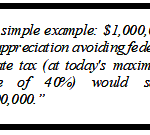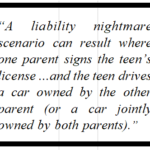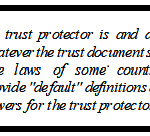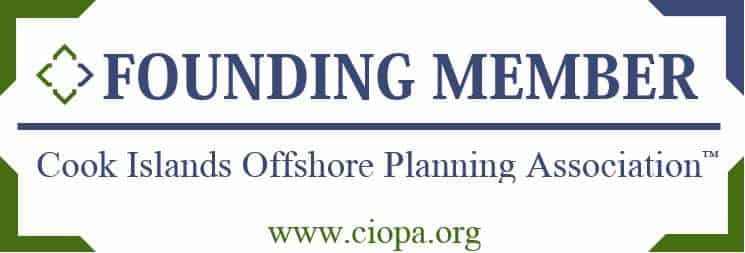Review of Offshore Jurisdictions: Jurisdiction 5 – Nevis
Volume VIII, Number 2 – March/April 1999
INTRODUCTION
With this issue we continue our periodic review of selected offshore jurisdictions. These reviews cover such factors as the legal system, the geographic location, communications facilities, availability of professional services, and other items we deem pertinent. Some of the jurisdictions reviewed are regarded by us to be unsuitable for the establishment of an asset protection trust (APT), but will be included because they have either received publicity or promoted themselves as asset protection jurisdictions. As indicated by the above subtitle, in this issue we will review Nevis.
BACKGROUND
Nevis is the smaller of two islands comprising the Federation of St. Christopher (“St. Kitts”) and Nevis (collectively, the “Federation”). Nevis is located in the Eastern Caribbean, approximately 1,300 miles southwest of Miami, Florida.
The capital is Charlestown. Nevis, an English-speaking common law jurisdiction with communications facilities and recently established professional trust services, has about 9,000 residents.
The Federation became an independent member of the British Commonwealth in 1983, under a constitution granting Nevis autonomy and the right to its own legislative and executive functions. In 1993 the Federation’s opposition to offshore legislation strained relations between St. Kitts and Nevis. In an attempt to capture a part of the growing offshore trust business, Nevis passed its own protective trust legislation: Nevis International Exempt Trust Ordinance of 1994 (“Ordinance”), effective April 28, 1994.
Then, in June 1996, the government of Nevis announced that it proposed to secede from its federation with St. Kitts, and, although the Nevis Assembly passed a resolution to secede, the requisite two-thirds vote was not obtained in last year’s referendum. Relations between the two islands were further strained when the Federation itself reversed its position against offshore legislation and adopted, among other laws, its own asset protection trust statute in 1997. Despite its strained relations with St. Kitts, Nevis is considered to be politically stable.
IMPORTANT LEGISLATION RAMIFICATIONS
The Ordinance, which was modified slightly in 1995, was modeled after the Cook Islands International Trusts Act, 1984 (the “Cook Islands Act”). The Ordinance permits self-settled spendthrift trusts, prohibits forced heirship, and abolishes the common law rule against perpetuities. The Ordinance exempts international trust assets and income from income, corporation, gift, withholding, estate, asset inheritance, succession and stamp taxes in Nevis.
In looking at any offshore jurisdiction, our initial focus is to assure that a claimant is unable to enforce a foreign judgment or apply foreign law in its efforts to reach the assets of an offshore trust governed by the jurisdiction’s laws. The Nevis Ordinance provides this comfort. As a result, the claimant will have to attack based on a fraudulent conveyance claim.
To date, the Ordinance (unlike the Cook Islands Act) has not been applied or interpreted by a Nevis court, nor is there any public record of a creditor attempting to reach the assets of a Nevis asset protection trust. This may be due to the newness of the Ordinance and the small number of trusts established under Nevis law.
Therefore, for guidance, we can only look to how similar laws were construed by other courts, such as the Court of Appeals in the Cook Islands infamous Orange Grove Cases (also known as Orange Grove I and Orange Grove II). These cases were based on the Cook Islands Act then in effect. As the Cook Islands Act then in effect was quite similar (but has since been amended and improved, see APN Vol. V, No. 4) we find discomfort in their similarity, especially with respect to how a court would interpret its statutory provisions relating to the statute of limitations issues involving a fraudulent transfer claim.
On the other hand, Nevis, like the Cook Islands, has the attractive burden of proof that requires the creditor to prove “beyond a reasonable doubt” that the trust was established or the transfer made “with principal intent to defraud that creditor” and that the trust’s establishment or funding left “the settlor insolvent or without property by which that creditor’s claim (if successful) could have been satisfied.”
The settlor’s sworn declaration of solvency at the time of settlement of the trust is prima facie evidence that the settlement and disposition of assets was not made with the requisite intent to defraud. However, if the settlor becomes insolvent or unable to satisfy a successful creditor’s claim because of the establishment or funding of the trust, he can be found to have had an intent to defraud. As we discussed in a prior issue of APN (Vol. IV, No. 4), our laws generally provide that, if a transfer is found to be fraudulent as to any creditor, the entire transfer can be undone.
Whereas, in Nevis (and other offshore jurisdictions) if a creditor is (somehow) successful in this endeavor, the entire transfer is not undone (as in the US), but only so much of the transfer as is necessary to satisfy that particular creditor. The next creditor must separately go through the same entire process!
This fraudulent transfer law, coupled with the fact that another Nevis law will not give effect to the judgment of a court of another country which is inconsistent with Nevis law, provides an impenetrable obstacle to a creditor’s attack on a properly structured and implemented Nevis trust.
In those rare cases where a fraudulent transfer case can be brought in Nevis, the creditor must bring his suit within 2 years. This is similar to the Cook Islands, and more attractive than the four years available under the Uniform Fraudulent Transfer Act, adopted by most states in the US, or the 6 year statute in the Cayman Islands.
Since Nevis would not be the appropriate venue to bring a case against a settlor who committed a tort (i.e., someone slipped and fell on his property in the U.S.) or breached a contract, etc., the type of case which is likely to be brought against an APT, as a result of the settlor’s actions, will be a fraudulent transfer case. Because our legal process moves so slowly, by the time the creditor can start his case in Nevis, it is likely that it will be too late.
OTHER IMPORTANT LEGISLATION
Under certain circumstances, it may be important for an APT to be able to “move” from its original situs jurisdiction. Nevis’ legislation fully recognizes and implements this requirement by, among other things, allowing a trust that has been in existence for at least 12 months to redomicile to Nevis, and then deeming it to have always been a Nevis trust. This essentially results in a retroactive application of the Nevis’ protective trust laws.
In some jurisdictions, a settlor’s bankruptcy, even many years after the establishment of a trust, will result in the trust being invalidated. Nevis’ law specifically states that a settlor’s bankruptcy will not affect the validity of his APT unless a fraudulent transfer was involved (in which case those rules will apply).
Finally, for those persons transferring community property to an APT, Nevis’ law, like that of the Cook Islands, specifically preserves the community property nature of the assets, thus retaining the “double” estate tax step-up in basis realized by owners of community property.
CONCLUSION
Nevis, which is a relative newcomer to the asset protection arena, currently lacks the track record of its counterpart – the Cook Islands. However, over time this may change, and if for some reason one could not use the Cook Islands, the laws of Nevis make it an attractive jurisdiction for the establishment of an APT.
Globally recognized professional asset protection planners in U.S. Donlevy-Rosen & Rosen, P.A. is a law practice with a focus on offshore asset protection planning. Let us explain the significant difference our experience can make when you want to thoroughly protect your assets. Call 305-447-0061 or simply send us a message using our contact page



















Connect
Connect with us on the following social media platforms.